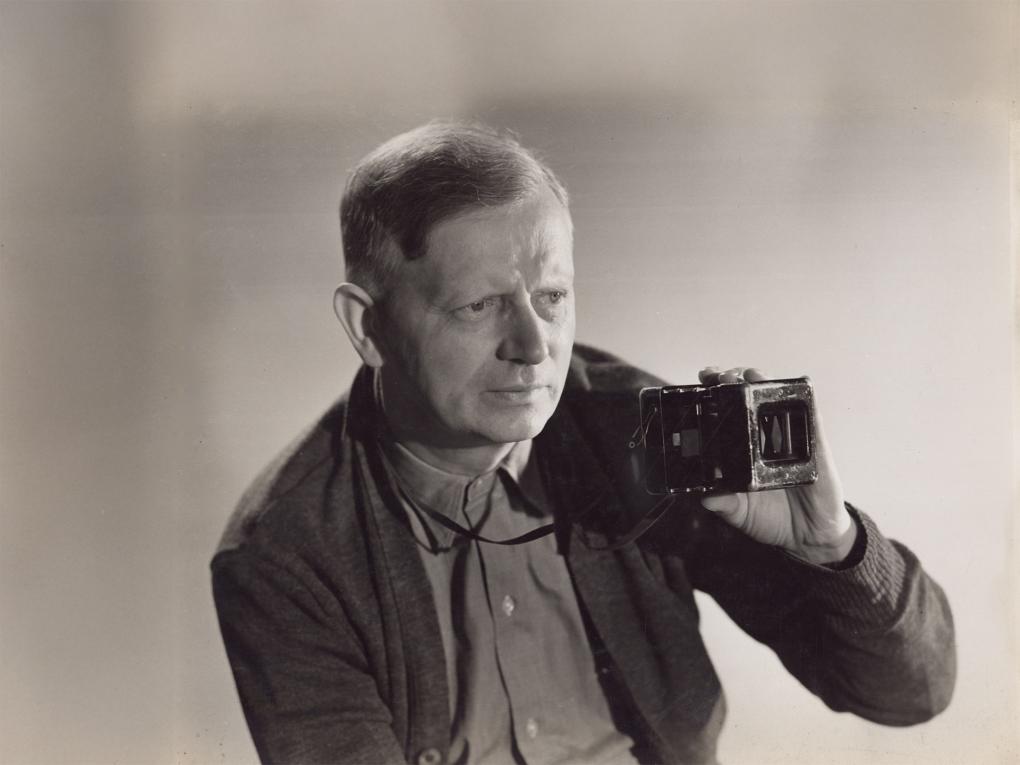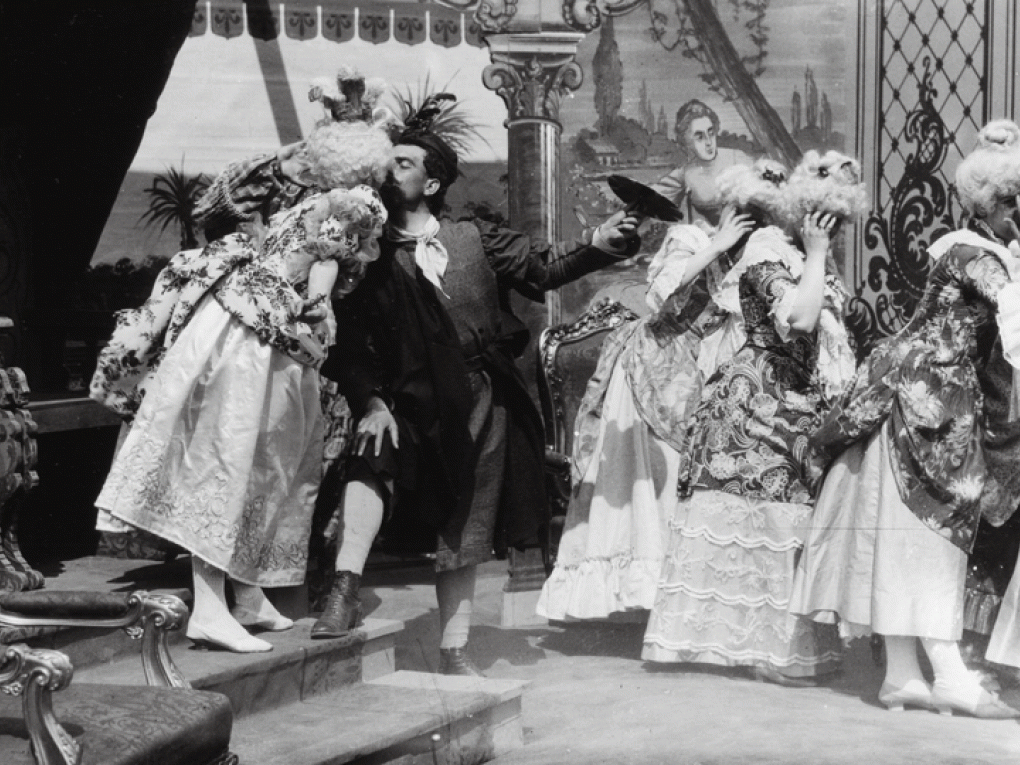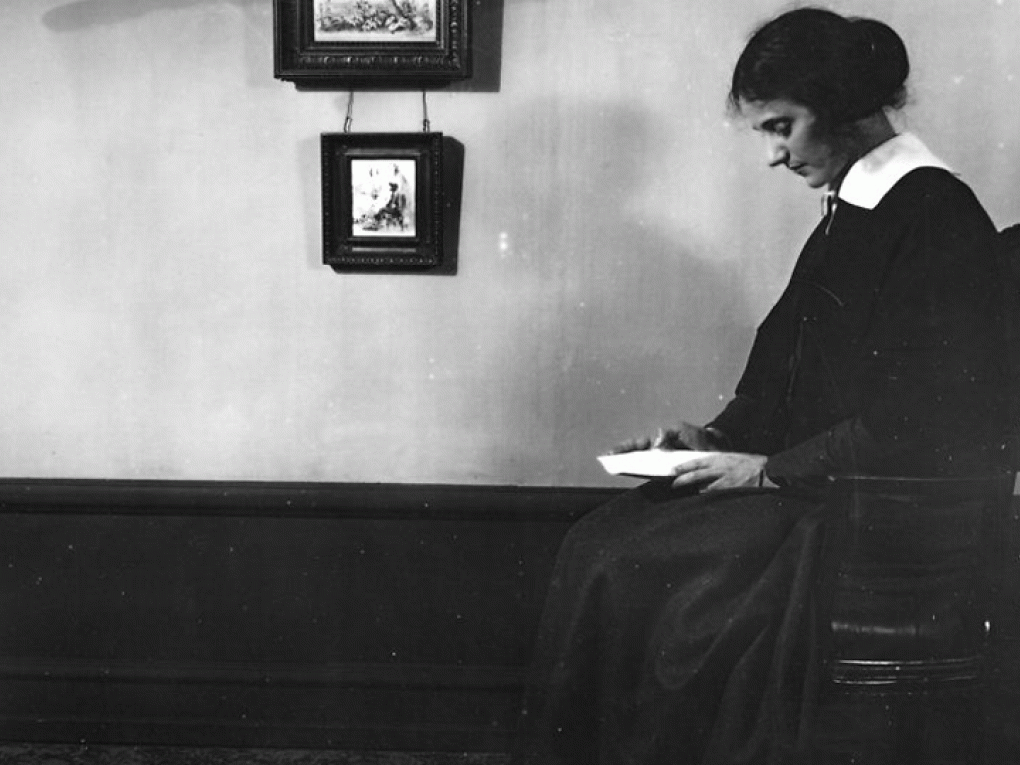FRAGMENT | The Princess of Illyria has spurned every suitor, when a gypsy loitering around the castle catches her eye. In actuality, he is the Prince of Denmark, there with his friend Kasper Røghat. The prince captivates her with magic devices, a noisemaker and a copper kettle, in return for kisses and a night in her bedchamber. When Kasper Røghat tells the king about the “affair,” the princess is thrown out of the castle, forcing her to settle in Denmark with the prince and work as a poor potter. Will the fairytale have a happy ending?
The film was directed by Carl Th. Dreyer – the most important director in Danish cinema. Internationally, Dreyer ranks among the greatest artists ever to work in the medium of film.
"The film is an attempt to craft a Danish national film after the recipe presumed to be behind the success of the great Swedish films: working from a well-known work of literature and using nature as a backdrop. Schnéevoigt’s shots of Danish woods are terrifically atmospheric and beautiful. Personally, Dreyer thought the film lacked momentum, perhaps because Drachmann’s lyrical fairy play was unable to satisfy Dreyer’s wish for naturalistic and nuanced character descriptions. When the production ran into financial trouble, Dreyer was forced to make cuts, including the lavish market scene he had planned.
'Once Upon a Time' was a big success when it opened in Denmark, but apparently was never distributed internationally in any significant way. The film quickly fell out of view and was thought lost for many years. An incomplete print was found in the 1960s sadly missing the entire last quarter of the film and several other scenes." (Source: Casper Tybjerg on www.carlthdreyer.dk)
The missing parts of the film have been reconstructed by the means of photographs and intertitles.
The film has Danish and English intertitles, and the score is composed and performed by Neil Brand.
The film was directed by Carl Th. Dreyer – the most important director in Danish cinema. Internationally, Dreyer ranks among the greatest artists ever to work in the medium of film.
"The film is an attempt to craft a Danish national film after the recipe presumed to be behind the success of the great Swedish films: working from a well-known work of literature and using nature as a backdrop. Schnéevoigt’s shots of Danish woods are terrifically atmospheric and beautiful. Personally, Dreyer thought the film lacked momentum, perhaps because Drachmann’s lyrical fairy play was unable to satisfy Dreyer’s wish for naturalistic and nuanced character descriptions. When the production ran into financial trouble, Dreyer was forced to make cuts, including the lavish market scene he had planned.
'Once Upon a Time' was a big success when it opened in Denmark, but apparently was never distributed internationally in any significant way. The film quickly fell out of view and was thought lost for many years. An incomplete print was found in the 1960s sadly missing the entire last quarter of the film and several other scenes." (Source: Casper Tybjerg on www.carlthdreyer.dk)
The missing parts of the film have been reconstructed by the means of photographs and intertitles.
The film has Danish and English intertitles, and the score is composed and performed by Neil Brand.
Genre
Production companies
Production country






